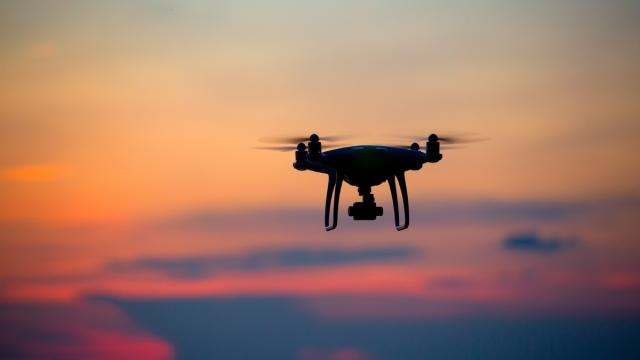Drone flying just became a whole lot more expensive in Australia. Not only is the equipment expensive to begin with but new legislation recently being passed and soon coming into effect, you’ll now need a licence to fly one. Here’s what you need to know.
[referenced url=”https://gizmodo.com.au/2018/12/10-laws-for-flying-drones-in-australia/” thumb=”https://gizmodo.com.au/wp-content/uploads/2018/07/drone-410×231.jpg” title=”10 Laws For Flying Drones In Australia” excerpt=”As more affordable options have entered the market in recent years, the number of drone owners in Australia has dramatically increased. But are there any laws or regulations surrounding drone usage? Absolutely, and if you’re a drone user it’s best to know them so you don’t accidentally get fined.”]
Wait, what are the new laws?
Back in July 2019, new legislation, Civil Aviation Safety Amendment (Remotely Piloted Aircraft and Model Aircraft”Registration and Accreditation) Regulations 2019, was passed by government requiring Australians to register their drone and model aircrafts with the Civil Aviation Safety Authority (CASA). This means if you want to fly a drone in Australia, you’ll now need to be at leas 16 years old and have a licence to pilot it.
The registration is supposed to last for 12 months and will cost you a fee, though the amount is still being decided on through a consultation process.
While the legislation was passed back in July, registrations are not yet required. Gizmodo Australia confirmed with CASA it’s expected the scheme will come into place in mid-2020 with fee consultations happening late-2019.
Does everyone need to register?
There are some pretty important differences in the legislation between drone flying for recreational purposes and those for commercial purposes. Anyone flying a drone or model aircraft weighing more than 250 grams will need to register it once the scheme comes into effect. You’ll also need to be 18 years old but if you’re 16, you can fly a drone with the supervision of an accredited drone owner over the age of 18.
To get accreditation, you’ll need to create a myCASA account and provide official documentation to prove your identity. Through your myCASA account, you’ll also need to apply for for an aviation reference number (ARN) and supply information about your drone, including the make, model, serial number and weight.
Then you’ll have to pay a fee, once the amount is decided. The exceptions to this new scheme is model aircraft association members if they’re only flying at CASA-approved model airfields or if you only intend to fly it indoors.
But the new scheme differs slightly is you’re flying drones for work. All drones will need to be registered, regardless of weight. It’s suggested there may be a fee difference between commercial and recreational drone registration as CASA’s site reads “fees may vary depending on how you intend to use your drone.” But, at this point, it’s still unconfirmed.
Is it hard to get accreditation?
Registering is the first part but if you’re eligible, you’ll also need to get accredited. This means you’ll need to pass a test. CASA’s website explains this will be a “short video followed by a quiz to test your knowledge”, completed through the myCASA portal. You can complete it as many times as you need if you fail and once you pass it, you’ll get an automatic certifcate.
Accreditation, itself, will apparently be free of charge and you’ll only need to do it every three years.
Okay, how long do I have until I need to register?
At this stage, it’s still unclear when you’ll need to register and if there will a specified grace period for existing drone owners. We’ve put these questions to CASA to clarify but a short released in September 2019 indicates the fee consultation will be undertaken in late-2019 with the scheme expected to be put in place by mid-2020.
So for now you won’t need to bother with a licence or registration but expect that to change very soon.
[referenced url=”https://gizmodo.com.au/2019/06/were-going-to-mistake-the-drones-of-the-future-for-annoying-flying-insects/” thumb=”https://i.kinja-img.com/gawker-media/image/upload/t_ku-large/xjvaaree5d5qmmhote09.gif” title=”We’re Going To Mistake The Drones Of The Future For Annoying Flying Insects” excerpt=”Harvard’s robotic flying bee has been in development for well over a decade now. And despite its incredibly simple design, over the past few years, its creators have improved Robobee’s capabilities, adding abilities such as the ability to hover and even steer itself down a pre-determined flight path. It’s too tiny to carry its own batteries and has been long reliant on a connected power cable. But last August, for the first time ever, Robobee made its first flight without a wire tether.”]
